ARTICLE AD BOX

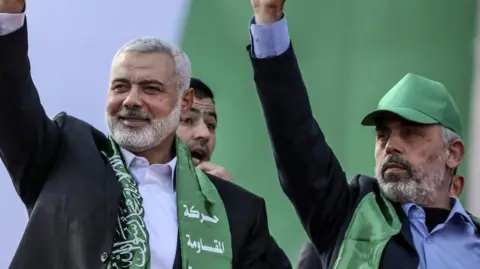 EPA
EPA
Hamas chose Yahya Sinwar (R) to replace assassinated leader Ismail Haniyeh (L). The pair are seen here together in 2017
Over the past week, watched by the world's media, the top leaders of Hamas descended on Qatar to choose a new political leader for their group.
Delegates flooded in from across the Middle East after almost a year of fighting between Hamas and Israel in Gaza.
Some arrived shaken, having woken just days before to the news that the group's previous political leader - Ismail Haniyeh - had been killed in a blast in Tehran, allegedly by Israel.
Haniyeh, who had overseen his group's negotiators in talks with Israel, played a crucial role in Hamas, balancing the militant wing's desire to take the fight to Israel with calls from some to reach a settlement and end the conflict.
His position, it was clear, had to be filled quickly.
At the mourning ceremony in Doha, Hamas leaders lined up shoulder to shoulder in a huge white tent with carpets and fancy chairs, decorated with pictures of Ismail Haniyeh. Hundreds of people gathered to pay their respects to the movement’s late leader and his bodyguard.
The scene was more than a memorial service - it signalled the end of an era and the beginning of a new, more extreme phase.
This was not the first time I had witnessed Hamas’s top officials gather to choose a new leader after an unexpected funeral. Back in 2004 I witnessed them meet after Israel assassinated the group’s founder Sheikh Ahmed Yassin – the meeting taking place in his house in Gaza. Less than a month later, Israel killed his successor Abdel Aziz al-Rantisi.
But this time the backstage discussions reflected the extent of the crisis and challenges they are facing.

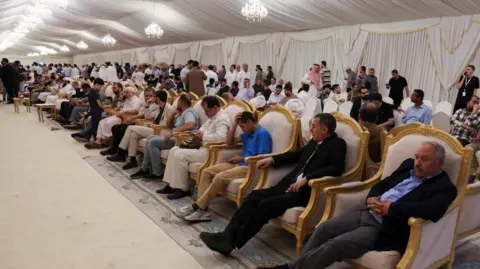 Reuters
Reuters
Hundreds of people turned up to mourn Haniyeh in Doha
Hamas attacked southern Israel on 7 October last year, killing about 1,200 people and taking 251 hostages back into Gaza. Since then, Israel’s military retaliation has killed more than 39,600 people, according to the Hamas-run health ministry, and wounded tens of thousands more. More than half the buildings in Gaza have been damaged or destroyed and almost the entire population has been displaced. Dissent against Hamas, which has ruled Gaza since 2007, has been growing. The group itself has taken severe losses.
On top of this, the killing of Ismail Haniyeh on 31 July in Tehran - a place he had always felt to be a safe haven - was a real shock for the organisation.
Hamas is convinced that Haniyeh was killed by an anti-personnel missile while he was browsing on his phone. Iran’s Revolutionary Guards have said a projectile with a 7kg warhead was used. Some Western media reports say he was killed by a bomb planted in the room beforehand.
Back at Haniyeh’s mourning ceremony in Doha, one man in his mid-60s with white hair and a short beard stood in a corner away from the spotlight.
“Pay close attention to him,” a Hamas media officer told me. Who was he? “He is the shadowy man, Abu Omar Hassan,” he said.
Abu Omar Hassan, or Mohamed Hassan Darwish, is the head of the Supreme Shura Council, the top consultative body in Hamas. According to Hamas’s constitution, he was in prime position to be the organisation’s interim head until elections which had been scheduled for next March.
“He is the man of the big missions,” I was told.
As the mourning ceremony ended, these leaders’ real work began. For two days, the movement’s veteran faces and shadowy figures held meetings in Doha, which has hosted Hamas’s political bureau since 2012, to elect a new leader.

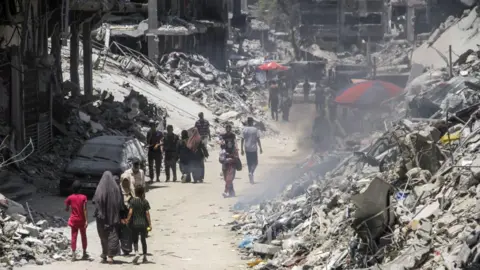 Getty Images
Getty Images
Israel's military onslaught has left much of Gaza in ruins
They chose Yahya Sinwar, already the group's leader inside Gaza since 2017. The choice may come as a surprise to many, but anyone following his career since Israel released him in the 2011 exchange deal for captured Israeli soldier Gilad Shalit knew he was always likely to lead Hamas one day.
No political leader in Hamas has ever been closer to the group’s armed wing. His brother Mohammed leads the largest Hamas military battalion, while Mohammed Deif - the elusive Hamas veteran who led its armed wing for two decades until Israel said it killed him last month - was his neighbour, friend, and classmate. The pair grew up together in Gaza's sprawling Khan Younis refugee camp.
Despite all this, many may see appointing him to the most important position in Hamas as madness. Israel's security agencies believe Sinwar planned and executed the attack on southern Israel, and he is top of their wanted list.
“Not all of the people inside Hamas leadership were in favour of the decision,” a senior Hamas official told me. “Some leaders raised their concerns, others pushed for a more moderate person. But in the end he got the majority of the votes.”
Another Hamas official who attended the meetings said the movement felt unable to choose the powerful shadow operator Abu Omar Hassan because he had little public profile and was unknown outside the movement, whereas the 7 October attack had given Yahya Sinwar global notoriety.
“Sinwar has become a trademark after 7 October and he has great popularity in the Arab and Islamic worlds,” the official said. “He enjoys close relations with the axis of resistance supported by Iran, and his appointment in the midst of the war sends a message of defiance to Israel.”
The “axis of resistance” is a network of armed groups backed by Iran. Other members such as Lebanon-based Hezbollah also present threats to Israel.

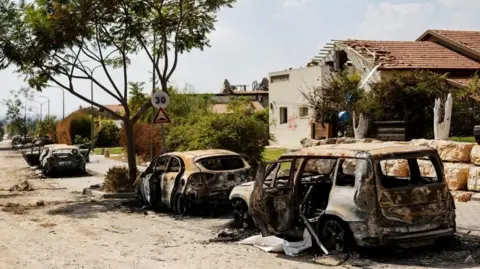 Reuters
Reuters
About 1,200 people were killed when Hamas attacked Israel on 7 October
Many Arab and some Western officials urged Hamas against naming Sinwar as leader because of his connection to the 7 October attacks. He and the organisation he now leads are proscribed as terrorists by many governments in the West.
“One of the reasons why we voted for him is because we want to honour him for masterminding the attacks” the official said. “October 7th belongs to him so he deserves to lead the movement.”
Ten months on from that attack, all attempts to agree a ceasefire have so far failed. The BBC understands that the two main mediators - Qatar and Egypt - are working on a new ceasefire proposal.
Leaks suggest the plan is based on convincing Iran not to respond militarily to the assassination of Haniyeh in its territory, in exchange for Israel ending its war in Gaza and withdrawing troops from the Philadelphi corridor.
The Philadelphi Corridor is a buffer zone, only about 100m (330ft) wide in parts, which runs along the Gaza side of the 13km (8-mile) border with Egypt. Gaza's only other land border is with Israel itself.
A Palestinian official familiar with the ceasefire negotiations told me in Doha: “Egyptian intelligence has already sent a team to Doha and there are meetings to formulate an action plan based on sparing the region a possible Iranian response… in exchange for a ceasefire.”
For now, the drumbeat of conflict is only getting louder, with Sinwar, the most extremist figure in Hamas, set to lead the group for the next five years - if he survives the war.

 3 months ago
21
3 months ago
21

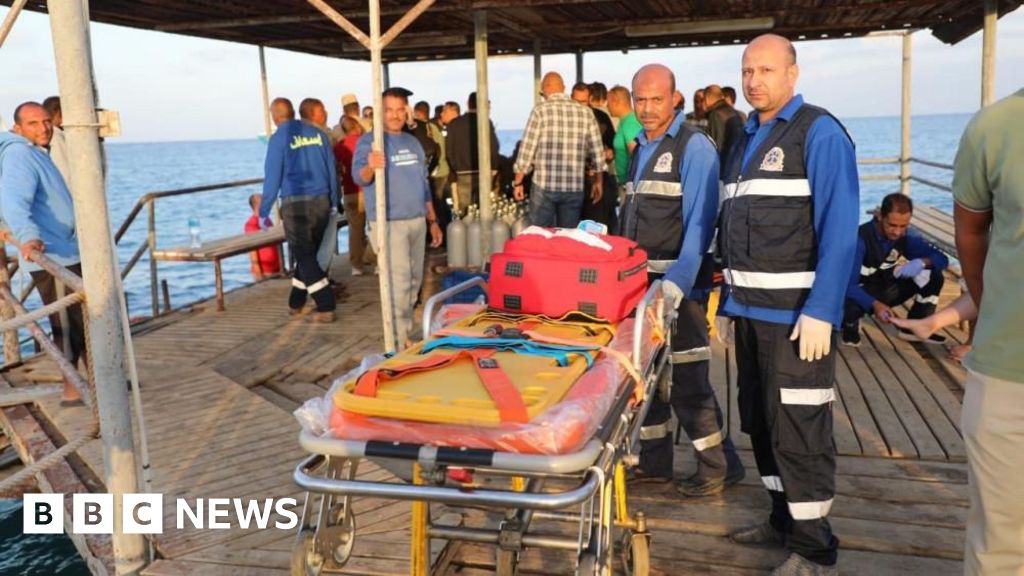






 English (US)
English (US)